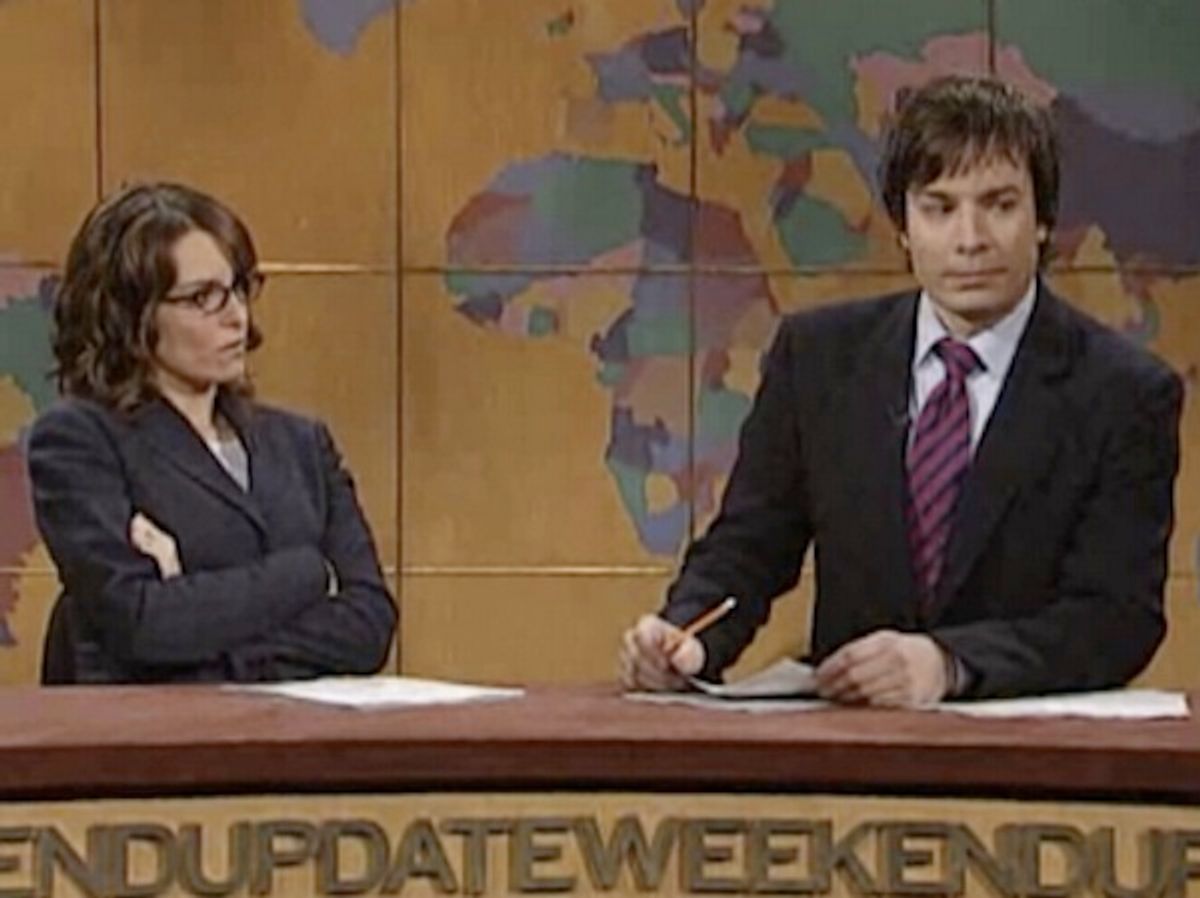"If you want to make an audience laugh, you dress a man up like an old lady and push her down the stairs. If you want to make comedy writers laugh, you push an actual old lady down the stairs."
That was Tina Fey in 2004, talking to Virginia Heffernan in the New Yorker about how mean the writers of "Saturday Night Live" could be. At the time, how could readers have known what we know now -- thanks to the multiple glowing reviews of her new book "Bossypants" (excerpts of which appeared in the New Yorker) -- that the joke isn't about the mean-spirited humor of pushing the elderly, but the compunction of women to push each other down flights of stairs (or, even worse, to fall down on purpose) to prove that they can make it in the boys' club of comedy.
But let's back up to 2001: Tina was already head writer at "Saturday Night Live," the first woman Lorne Michaels had ever hired for that position. So, you know, score one for the ladies. This was also the year that Tina's crew won a Writer's Guild Award for their 25th Anniversary Special. Behind the scenes, Tina was killing it.
And then Lorne gave her the role of co-hosting "Weekend Update" with Jimmy Fallon, which traditionally only kept female anchors on to play the straight man (or woman) to their raunchy male counterparts. TV Guide called the pairing the best since "Dan Aykroyd called Jane Curtin an ignorant slut."
Tina and Jimmy's relationship was much less tempestuous than the point/counterpoint segments that Jane and Dan used to do (where, it should be noted, the joke of the sketch involved Jane and Dan calling each other terrible names while making their cases). Fallon was the goofball younger brother to Tina's staid, "smart girl in glasses" prude. While Jimmy ended "Update" by throwing pencils at the ceiling, Fey would make her own callback to her predecessor Curtin by using her and Chevy Chase's original closing line, "Goodnight, and have a pleasant tomorrow." But it was still hard for Tina, a comedian trained at Chicago's Second City, to only play one part on the show. Even Lorne noted that he was placing his head writer in a box:
The audience isn't seeing Fey's whole range, Michaels said, noting that she's somewhat restricted by the "more contained presence'' required by "Weekend Update.'' But there's more there than just humor, said her boss, who admires her tenacity.
Of course, later that year, when it became obvious that Tina was becoming "the hot one" (of the women on the show), Lorne totally changed his idea of why he put Tina with Fallon. In an article for the Observer in March 2001 called "Meet Four-Eyed New Sex Symbol, 'Weekend Update' Anchor Tina Fey," Lorne commented on the duo's dynamic:
"The old Hollywood thing was that she gave him sex and he gave her class … the rhythm and timing of that is just a chemistry thing: either it works or it doesn't …. We saw the beginnings of that working."
Fey's admitted rocky relationship with her own sexual presence (and that of all female comedians, basically) didn't start in the writer's room where she may have been outnumbered, but was still boss. It began when the comedian was put on air and immediately stopped being the head writer and started being part of the "Astaire-Rogers combination." (Another Lorne-ism.) Though no one ever stopped calling Tina brilliant, smart and funny -- in short, her credentials and intelligence were never in question -- that added ingredient of the camera immediately commodified Tina in a way that it commodifies any actor or actress. Maybe that's why her early "Weekend Update" pieces were more about giving Fallon the room to ham it up than it was to prove her own comedic chops:
Post-Fallon, Tina and Amy Poehler had their all-girls club on "Update," another first for the show, and it was easier to see Tina's success on-screen as part of a feminist comedy movement. But back in 2001, despite all her achievements and success running the show, Fey was still wrestling away from the image of being just another pretty face. Even if that face was wearing glasses that were only being used for TV appearances.

Shares